#martin of tours
Explore tagged Tumblr posts
Text

Saint Martin of Tours
#st martin#saint martin#beggar#art#cloak#tours#gaul#france#chivarly#roman#knight#knights#soldier#medieval#middle ages#history#europe#european#christianity#christian#horse#religious art#religion#roman empire#martin of tours#cathédrale saint gatien#castle#fortress
142 notes
·
View notes
Text
Feast Days: Martinmas
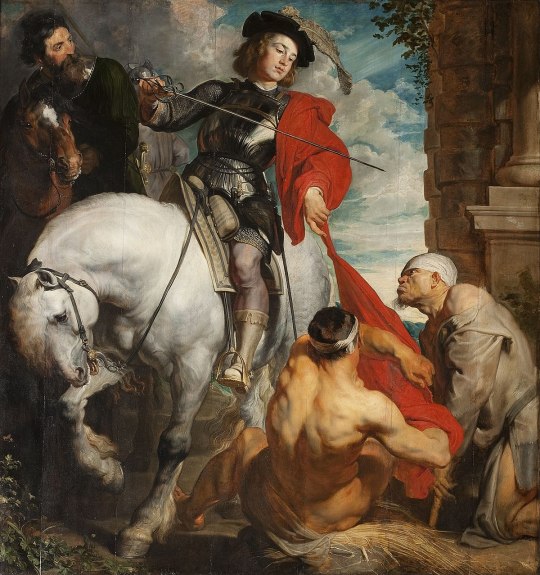
Anthony Van Dyck ~ "St. Martin Dividing His Cloak" (c.1618)
Happy Martinmas!
Today marks the feast day of St. Martin of Tours, who was bishop there from 371 CE until his death in 397 CE. He is the patron saint of many things, including: against poverty, against alcoholism, the poor, cavalry, Buenos Aires, quartermasters, wool-weavers, soldiers, and tailors, as well as wine growers, makers, and sellers. Whew! He must be very busy.
Keep reading for info about his life, a snitch goose, where the word 'chapel' came from, and how to tell what the weather will be like at Christmas.
His Life
Much of what we know about Martin comes from his hagiographer, Sulpicius Severus, who includes some 'artistic license' that is common in chronicles of the time, and therefore must be taken with a grain of salt.
Martin was born anywhere from 316-336 CE in Savaria, now Szombathely, Hungary. His father was a senior officer in the Roman Army, and as such was given land in northern Italy for his retirement. At the age of 10, Martin attended a Christian church against the wishes of his parents, and became interested in Christianity. Because of his father's status as a veteran, he was required to join the cavalry at 15. Dates surrounding his military service are shaky, but Severus states that, during his time stationed in Gaul, he was riding on horseback when he encountered a poor man with threadbare clothes. Having compassion on him, Martin used his sword to cut his own woolen cloak in two and gave the other half to the man. That night, Jesus Christ appeared to him in a dream, surrounded with angels and wearing half of the cloak. After this, Martin was baptised as a Christian. Though other miracles of his are recorded, this tale is the one most associated with Martin's life. It fits in with depictions of God or his angels in disguise as a beggar, traveller, &c., and is also a narrative found in many other religions and traditions. (Biblical examples include Abraham feeding the three angels in Genesis 18).
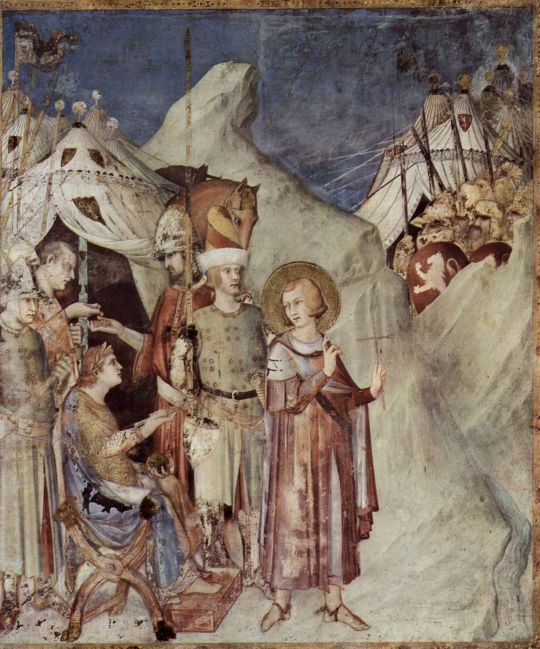
Martin dips from the army ~ fresco by Simone Martini (c.1320s)
With his new faith now firmly a part of his life, Martin decided to leave the army. Before a battle near modern-day Worms, Germany, Martin went before Emperor Julian and refused his salary, saying, "I am the soldier of Christ: it is not lawful for me to fight." They threw him in prison for this, but due to ye olde extenuating circumstances, he was released and discharged without further incident.
Martin made his way to modern-day Tours in France and declared himself a hermit, becoming a disciple and friend of Hilary of Tours. Because Christianity was Not OK™ in the Roman Empire, he and Hilary faced a lot of discrimination, including corporal punishment and exile. After converting his mother to Christianity and having numerous adventures, like living pretty much alone on an island, he and Hilary settled down in and around Poitiers, where Martin established Ligugé Abbey. It is the oldest known monastery in Europe! Martin made it his home base while he preached throughout western Gaul.

In 371 CE, the bishop of Tours died, and Martin was considered a good candidate for a successor. However, he liked living as a hermit and monk, and they resorted to tricking him into coming to Tours and then forced him to become the bishop. Legend holds that he tried to hide in a barn, but a honking goose gave him away. Hence he is the patron saint of geese, which I think is adorable. Martin proved true to his hermit ways, living very simply in huts with his monks. He established a rudimentary parish system, through which he visited different Christian communities and established monasteries. He was very determined in his efforts to convert local Pagans, as well as protect Christian institutions from unfriendly sects in the area, and in some cases he was successful. He died in 371 CE, already a venerated man. His popularity was ensured by his adoption by various French royals and by the Third Republic as a national symbol.
Martin has been portrayed by several famous artists, including Van Dyck, Peter Bruegel the Elder, and El Greco. He is usually portrayed on horseback, dividing his cloak for the poor man, though occasionally he can be seen riding a donkey. This references another story in his life about the time where he met the Devil and outwitted him. It also connects him to the image of Jesus riding a donkey into Jerusalem (recounted in Mark 1:1-11).
Martinmas and its Traditions
Martin lent his legacy to a host of English words and phrases, including those relating to the word 'chapel'. Temporary buildings that held the relic of his cloak (cappa in Latin) were referred to as cappella, and hence the word 'chapel' was born. A similar thing happened to the word 'chaplain', which derived from the word for the priest in charge of the cloak.
Though the Anglo-Saxon church did celebrate St. Martin to some extent, more references to Martinmas celebrations begin to crop up after Norman Conquest of 1066, when the Frenchman William the Conqueror invaded England. Supposedly, he promised to build an abbey dedicated to Martin if his invasion of England was successful. William was very likely familiar with the early Mediaeval association of the battle-hungry rulers of France with St. Martin, and was possibly responsible for his increased popularity in England.
In England and Scotland, and indeed through much of western Europe, Martinmas became a celebration marking the culmination of the harvest and the beginning of winter. From the late fourth century through the late Middle Ages, it also served a similar purpose to Mardi Gras/Carnivale: a period of fasting was ordained for the day after Martinmas through Christmas, so Martinmas was your last chance to stuff your face for a long time! (This period later became Advent, though with much laxer rules). As such, it was a time for feasting, celebration, bonfires, getting really drunk, and even events such as bull-running, as in Stamford, Lincolnshire. It was also a time for the end-of-harvest tasks, such as sowing winter wheat and slaughtering pigs and cattle. An old English saying goes, "His Martinmas will come, as it does to every hog", meaning, "they will get their comeuppance" or "everyone dies someday". Due to Martin's association with geese, some celebrated with a roast goose, but in Britain particularly it was also popular to eat salted pork or beef. For those not rich enough to have a goose, a duck or hen would also suffice. Other traditional fare included black pudding, haggis, and the first wine of the season.
On the business side of things, Martinmas served as a quarter day in Scotland and in parts England. A quarter day was one of four days on which major legal business was conducted. Servants and labourers would be hired or let go, rent was paid, contracts would begin or end, &c. Hiring fairs would be held for agricultural labourers seeking employment, and there would also be entertainment, food, trading, and other scenes of merriment. One of the most famous Martinmas fairs was at Nottingham in England, which lasted eight days.
Like many other English holidays, there is weather folklore associated with Martinmas. To have a warm fall and winter is to have a "St. Martin's Summer". If Martinmas proves an icy day, Christmas (or the rest of the winter) will be very warm. The rhyme puts it more pithily: "If the geese at Martin's Day stand on ice, they will walk in mud at Christmas".
If you stand at the back of the church and observe the congregation on Martinmas, those with a halo of light around their heads will not be alive by next Martinmas.

Interior of St. Martin-in-the-Fields, with a funky window!
The church of St. Martin-in-the-fields in Trafalgar Square in London is named after Martin. Many people commemorated there are associated with his anti-war sentiments -- these include Vera Brittain, a memoirist and pacifist; and Dick Sheppard, founder of the Peace Pledge Union. The church also supports houseless and vulnerably housed people.
The holiday gradually fell out of practice due to the English Reformation (when England split from the Catholic Church throughout the 1500s) and the Interregnum (Puritan republican government, 1649-1660). The observance of Armistice Day on the same day largely overshadowed the holiday in the UK, though many regions in Western Europe still take part in traditional festivities.
Martinmas is celebrated on 12 October in the Eastern Orthodox Church.
If You're Still Interested...
"The Life of St. Martin" by Sulpicius Severus himself! (pdf)
Pot Roast Martimas Beef Recipe by Chatsworth House
Sources
Historic UK
Wikipedia (Martin of Tours)
Wikipedia (St. Martin's Day)
Fisheaters.com
The Encyclopedia of Saints by Rosemary Ellen Guiley
"Medieval English "Martinmesse": The Archaeology of a Forgotten Festival" by Martin Walsh (via jstor)
#feast day series#feast day#martinmas#st martin#martin of tours#history#cultural history#english history#british history#saints day#folk history
22 notes
·
View notes
Photo

Martin, apostle of Gaul.
by LegendesCarto
33 notes
·
View notes
Text


When you just want to take a nap and they won't let you.
2 notes
·
View notes
Text

THE DESCRIPTION OF SAINT MARTIN OF TOURS The Patron Saint of Reformed Alcoholics, Riders and Quartermasters Feast Day: November 11
"Lord, if your people still have need of my services, I will not avoid the toil."
Known as 'Martin the Merciful', the patron of those who against poverty and alcoholism, beggars, hotel-keepers, innkeepers, the Archdiocese of Bratislava, the Diocese of Rottenburg-Stuttgart, and the U.S. Army Quartermaster Corps, was born in 316 or 336 in the Diocese of Pannonia (now Szombathely, Hungary). At the age of 10 he attended the Christian church against the wishes of his parents and became a catechumen. Christianity had been made a legal religion (in 313) in the Roman Empire. It had many more adherents in the Eastern Empire, whence it had sprung, and was concentrated in cities, brought along the trade routes by converted Jews and Greeks (the term 'pagan' means 'non-combatant'). Christianity was far from accepted among the higher echelons of society; among members of the army the worship of Mithras would have been stronger. Although the conversion of the Emperor Constantine and the subsequent programme of church-building gave a greater impetus to the spread of the religion, it was still a minority faith.
According to his biographer, Sulpicius Severus, he served in the military for only another two years, though it has been argued that these two years, 'are in fact not nearly enough to bring the account to the time when he would leave, that is, during his encounter with Caesar Julian (the one who has gone down in history as Julian the Apostate) Martin would have been 45 years old when Julian acceded to the throne, and at the usual end of a military contract.'
Being the son of a Roman officer (tribune), he was forced to enter the army at 15, and was required to join a cavalry ala. At the age of 18 (around 334 or 354), he was stationed at Ambianensium civitas or Samarobriva in Gaul (now Amiens, France).
While he was stationed at Gaul when Martin was 23, he saw at the gate a beggar almost frozen to death. Immediately, he cut his military cloak into two pieces with his sword, and gave one to the poor man. That night, Martin saw Jesus Christ in his sleep, dressed in that half cloak. Thereafter, he wanted to leave the army to serve God alone. But the Barbarians were about to attack, and Julian interpreted it as an act of cowardice.
Martin replied: 'I am prepared to stand in the battle-line unarmed and to advance alone against the enemy in the name of Christ.'
Martin declared his vocation, and made his way to the city of Caesarodunum (now Tours), where he became a disciple of Hilary of Poitiers' Christian orthodoxy. He opposed the Arianism of the Imperial Court. When Hilary was forced into exile from Pictavium (now Poitiers), Martin returned to Italy. According to Sulpicius, he converted an Alpine brigand on the way, and confronted the Devil himself. Having heard in a dream a summons to revisit his home, Martin crossed the Alps, and from Milan went over to Pannonia. There he converted his mother and some other persons; his father he could not win over.
The following day, the Barbarians miraculously asked for an armistice. Thus, Martin was allowed to leave the army and to receive baptism. Having preached the Gospel to his family, Martin became a monk at Ligugé in France.
Martin was elected as bishop of Tours in 371, proving himself an excellent pastor. He founded monasteries, educated the clergy, and gave particular attention to the conversion of the rural population. He is also credited with destroying many pagan temples and sacred trees. He spent the last days of his life with his hands raised to heaven.
To those who suggested he got some relief by lying on his other side, he answered: 'Allow me to look toward heaven rather than the earth.'
Then, he saw the devil standing near and cried: 'You, bloodthirsty brute, will not have me for your prey!'
With these words, Martin gave up his spirit on November 8, 397 in Candes, Gaul (modern-day France) at the age of 60 or 81. Martin of Tours was proclaimed patron of Italian volunteering by the Italian bishops in the spring of 2021.
#random stuff#catholic#catholic saints#martin of tours#martin the merciful#san martin de tours#u.s. army#quartermasters
1 note
·
View note
Text
"From beginning to end" a double page collage tribute to the horror podcast that forever changed my brain chemistry :]





#tma#the magnus archives#tma5#tma season 5#tma spoilers#the magnus archives podcast#jonmartin#jon tma#jonathan sims#tma jon#tma jmart#martin k blackwood#martin tma#martin blackwood#tma martin#traditional art#collage#sketchbook spread#sketchbook tour#i made this like half a year ago i dont know why i haven't posted it here lol#incredibly proud of this one btw#had the most fun making it and loved higing all the little details#i hope you spot all of them :]
2K notes
·
View notes
Text

commission :P
#fall out boy#patrick stump#this was dangerously close to being a bi pride flag#had to change hues tho#bi patrick for the win ig#pete wentz#fob#fob fanart#fob patrick#andy hurley#joe trohman#fall out boy patrick#so much for stardust#so much for (tour) dust#so much (for) stardust#smfs#fob smfs#fob fandom#bandom#emo trinity#emo quartet#emo#fall out boy fanart#fall out boy joe#fall out boy pete#fall out boy andy#patrick martin stumph#patrick stumph#gay pride
630 notes
·
View notes
Text

Depeche Mode in concert during World Violation Tour, 6 Oct 1990, Sweden
258 notes
·
View notes
Text

Maison Margiela: Future High 'Yeezus Tour' (2014)
#maison margiela#maison martin margiela#future#future high#yeezus#yeezus tour#kanye west#ye#fashion#shoes#fur#sneakers#footwear#2014
224 notes
·
View notes
Text
Chris Martin from Coldplay Dedicates "Everglow" song to Taylor Swift at Coldplay’s show in Düsseldorf!
“This is for Taylor Swift because she left town. This is for all of you who feel sad today because Taylor had to go to the next city So We sing this love song, this heartbreak song and send it to Taylor wherever she is today.” (on July 20, 2024 | via begscece on tiktok)
293 notes
·
View notes
Text

St Martin and the Beggar by Alfred Rethel
#st martin#saint martin#beggar#art#alfred rethel#cloak#gaul#france#chivalry#roman#cavalry#soldier#knight#knights#christianity#christian#medieval#middle ages#martin of tours#mediaeval#history#europe#european#religion#religious art#white horse#white steed#armour#horse#roman empire
137 notes
·
View notes
Text
Taylor’s speech + surprise song performance on guitar of Message In A Bottle/How You Get The Girl/New Romantics + in-ears malfunction
- The Eras Tour in Stockholm, Sweden (N3) on May 19, 2024 (x)
#miab#hygtg#new romantics#surprise song guitar#surprise songs#eras tour stockholm 3#eras tour#max martin#taylor swift
240 notes
·
View notes
Text

⛓️Some Great Reward in colours, 1984
#depeche mode#some great reward#some great reward tour#dave gahan#martin gore#andy fletcher#alan wilder#dm 80s#musicians#80s music#electronic music#new wave
293 notes
·
View notes
Text

194 notes
·
View notes
Text









Some new photos from the Middle East Tour!
#bridget costello#wig looks a bit better in these!#dougie carter#nadim naaman#lara martins#phantom of the opera#the phantom of the opera#poto middle east tour
83 notes
·
View notes
Text

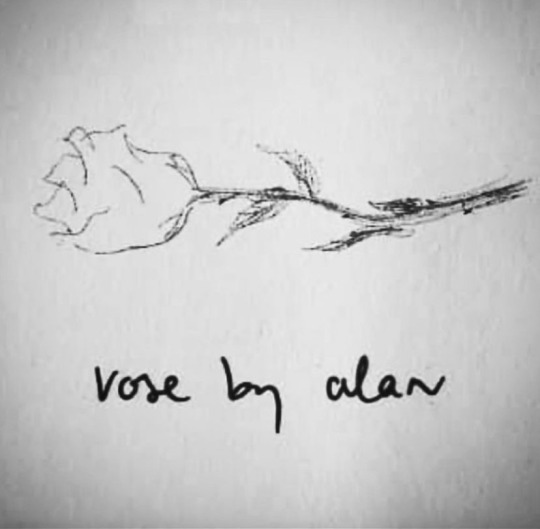
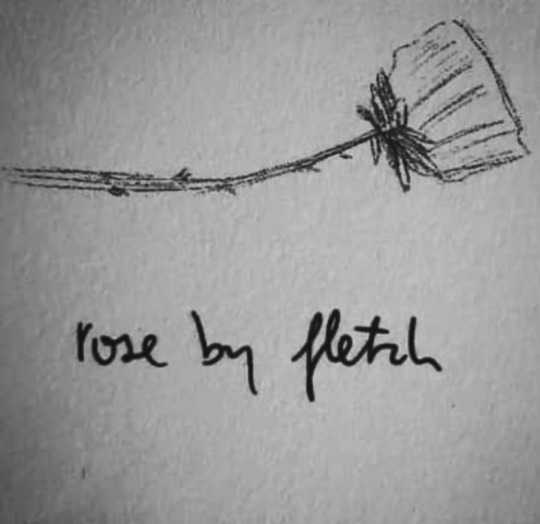
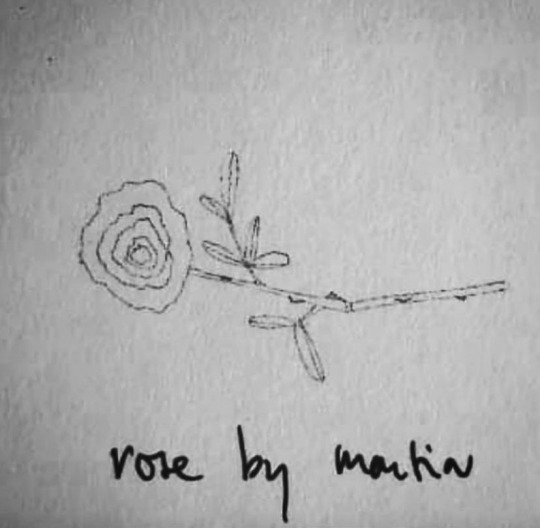
for the world violation tour book, each of the band members drew a rose, with handwriting by anton
#depeche mode#dave gahan#alan wilder#martin gore#andy fletcher#violator#world violation tour#synthesizer#synthpop#synthwave#electronic music#80s#80s music#80s fashion#80s aesthetic#90s#90s music#90s fashion#90s aesthetic#devotees#explore#explorepage#foryou#foryoupage
412 notes
·
View notes